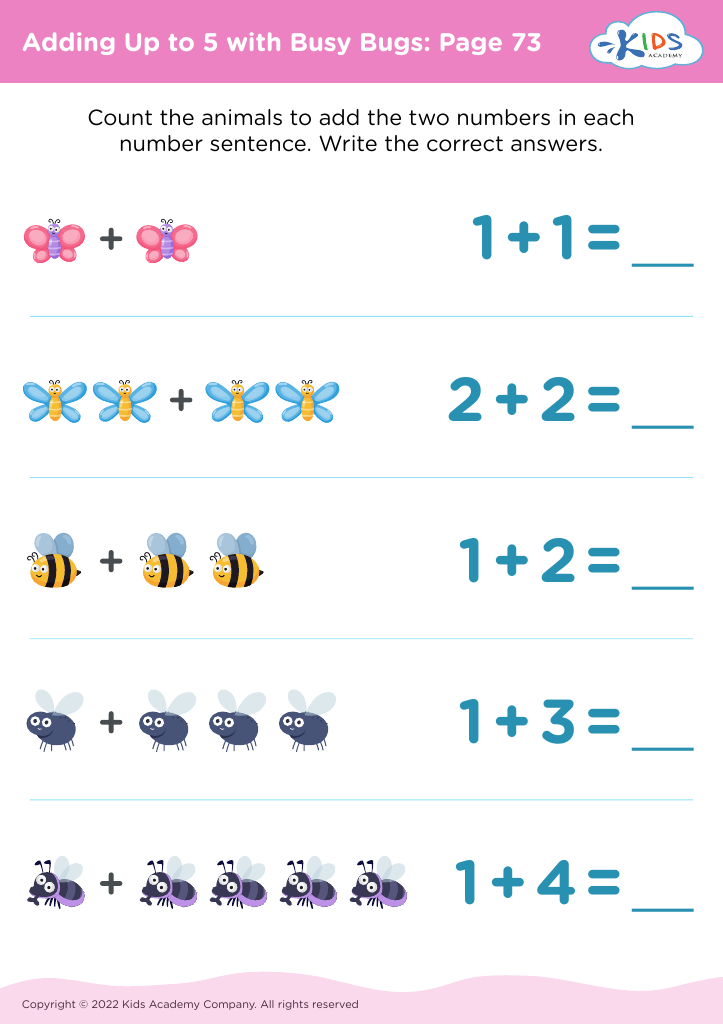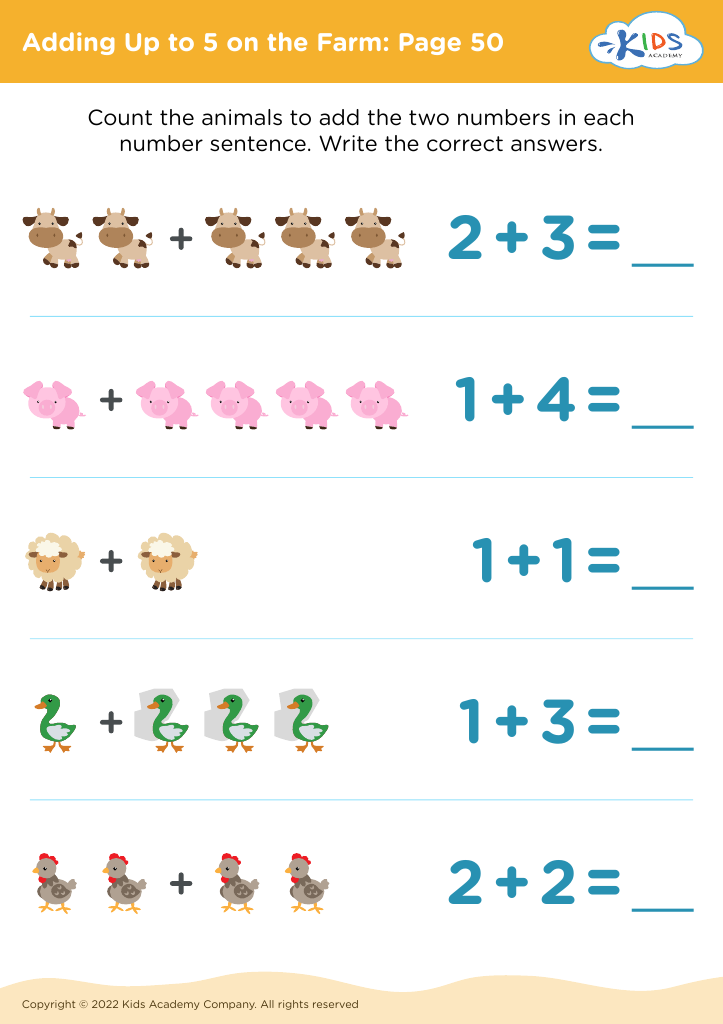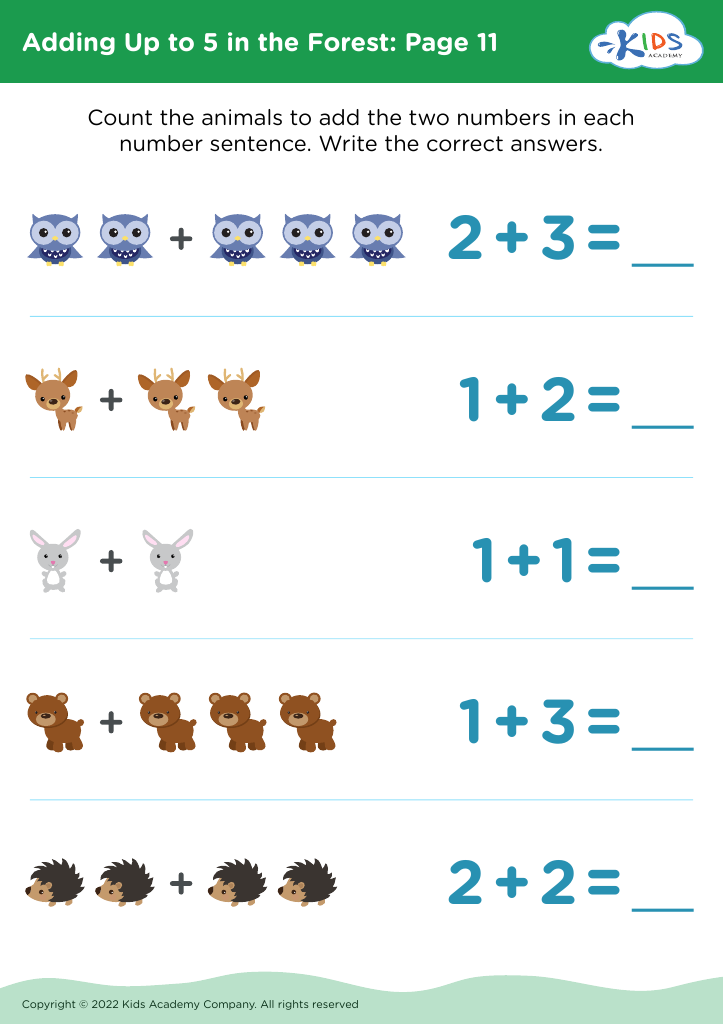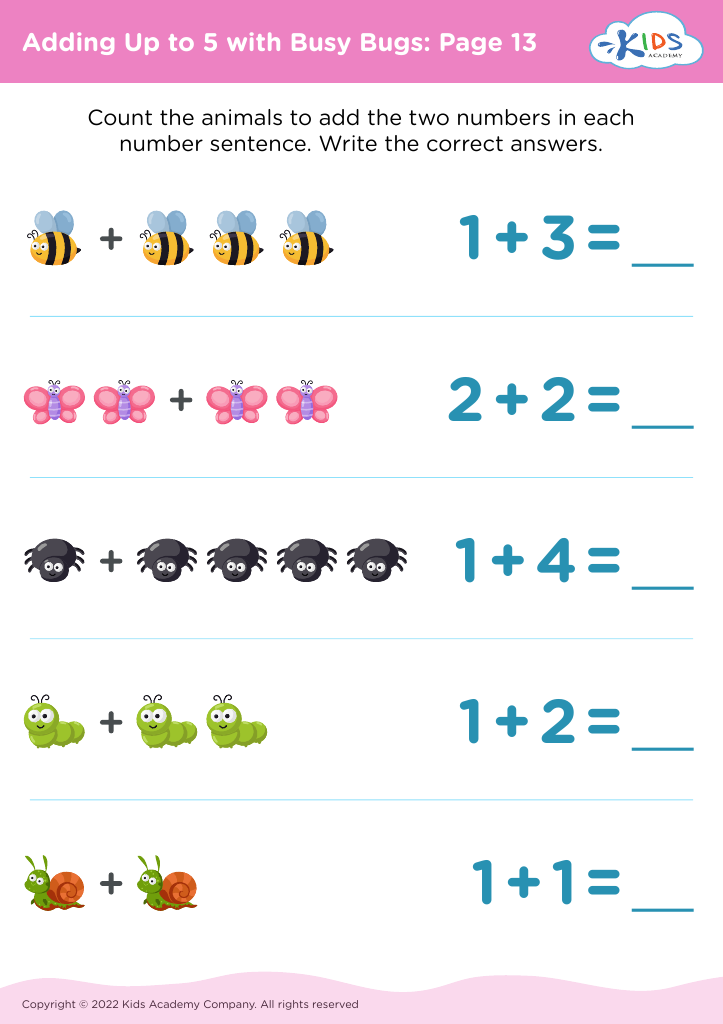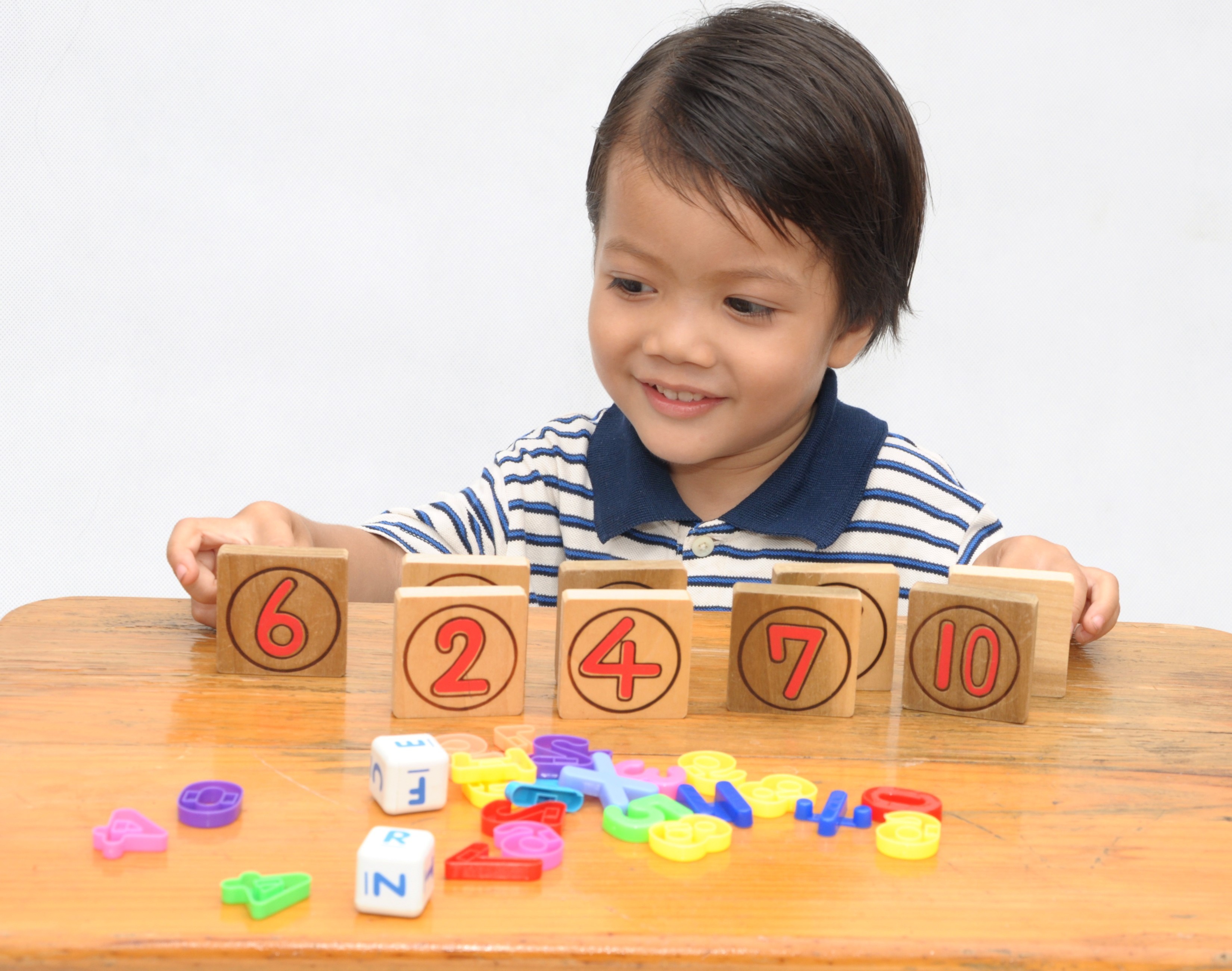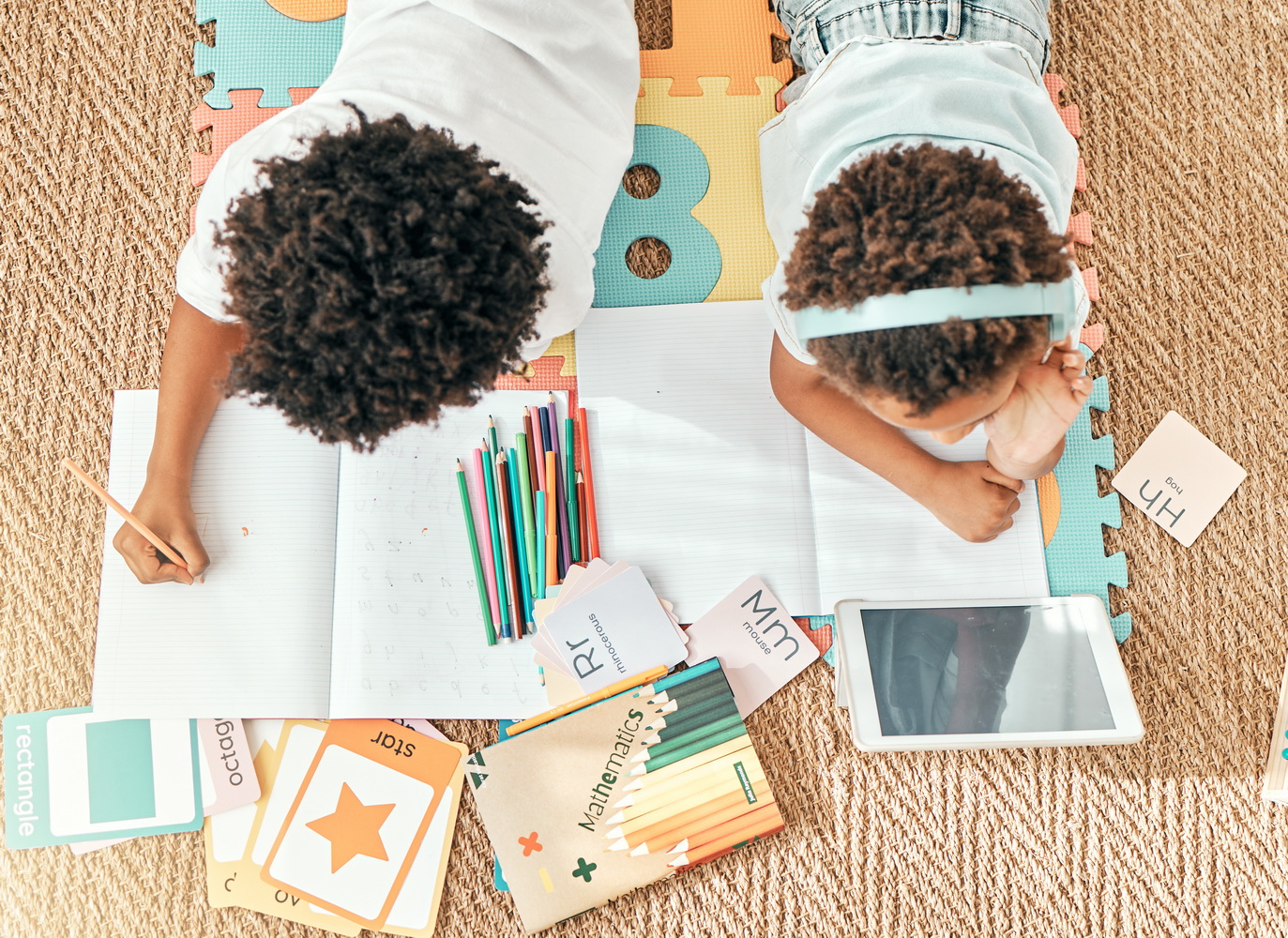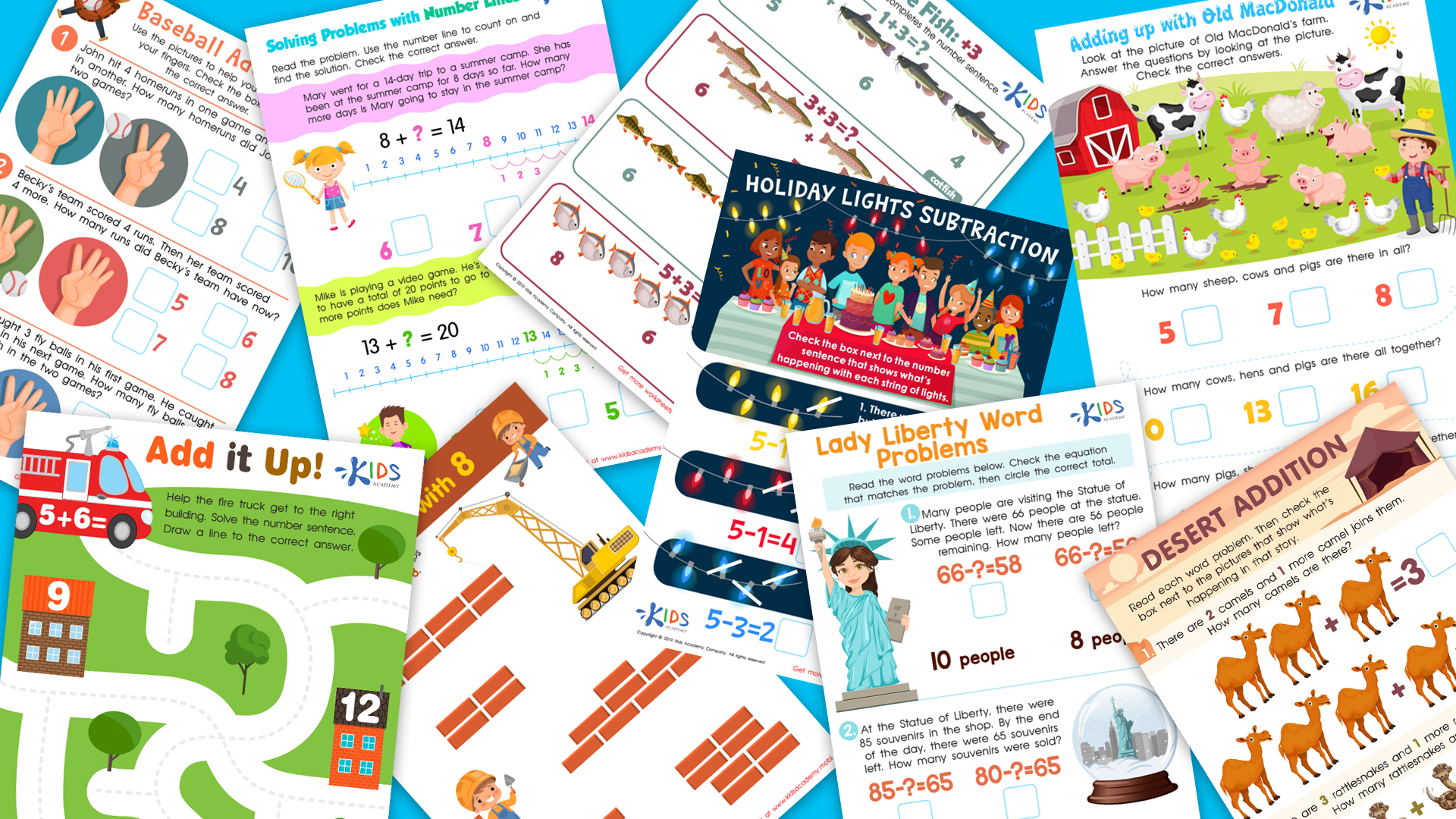Visual Perception Skills Addition & Subtraction Worksheets for Ages 4-8
5 filtered results
-
From - To
Boost your child's math confidence with our "Visual Perception Skills Addition & Subtraction Worksheets" designed specifically for ages 4-8! These engaging and interactive worksheets help young learners develop essential visual perception skills while mastering basic addition and subtraction concepts. Our resources promote visual recognition, pattern analysis, and spatial awareness, making learning math fun and effective. Perfect for home or classroom use, these worksheets are thoughtfully crafted to capture children's attention and reinforce their understanding through colorful illustrations and relatable scenarios. Give your child the tools they need to succeed in math and enhance their cognitive abilities with our playful, educational worksheets!
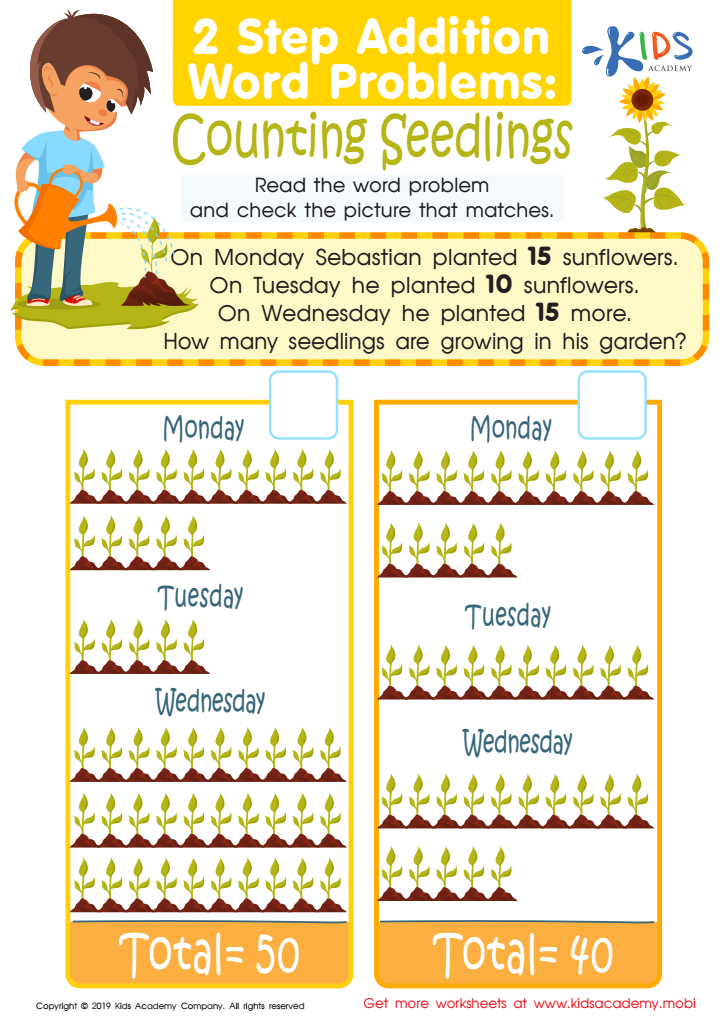

Counting Seedlings Worksheet
Visual perception skills are crucial for children aged 4-8 as they form the backbone of early mathematical understanding, particularly in addition and subtraction. When children excel in visual perception, they can effectively recognize patterns, shapes, and spatial relationships, which directly impact their ability to grasp numerical concepts.
For parents and teachers, fostering these skills is essential because much of early math is visually based. Children often visualize problems or count objects to solve sums and differences. Strong visual perception helps them comprehend and manipulate numbers in their environment, making math more relatable and less abstract.
Moreover, these skills play a significant role in developing problem-solving abilities and critical thinking. By enhancing visual perception, children improve their focus and attention span, which are needed for learning and completing tasks. As a result, they gain more confidence in their math capabilities, leading to better overall academic performance.
Investing time in activities that strengthen visual perception—like puzzles, sorting games, and visual matching exercises—ensures that children are well-equipped to tackle future mathematical challenges, setting a strong foundation for lifelong learning.
 Assign to My Students
Assign to My Students

